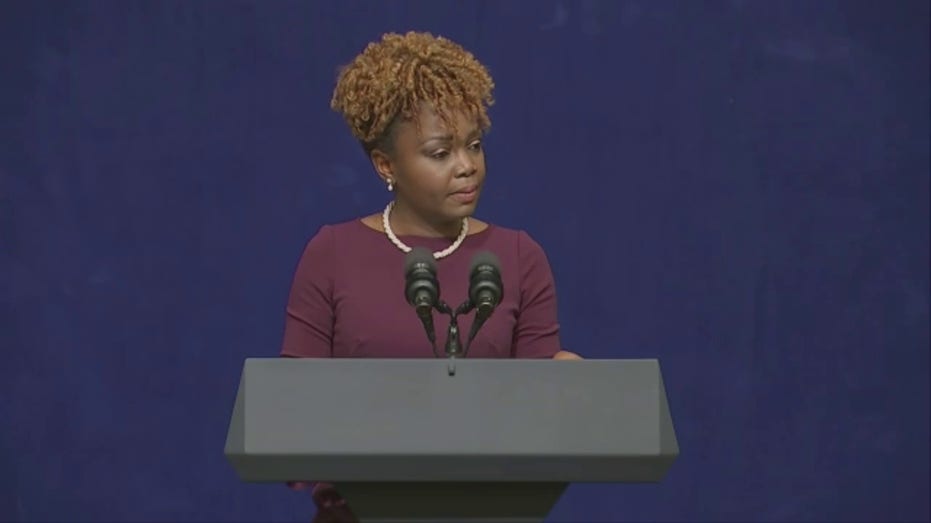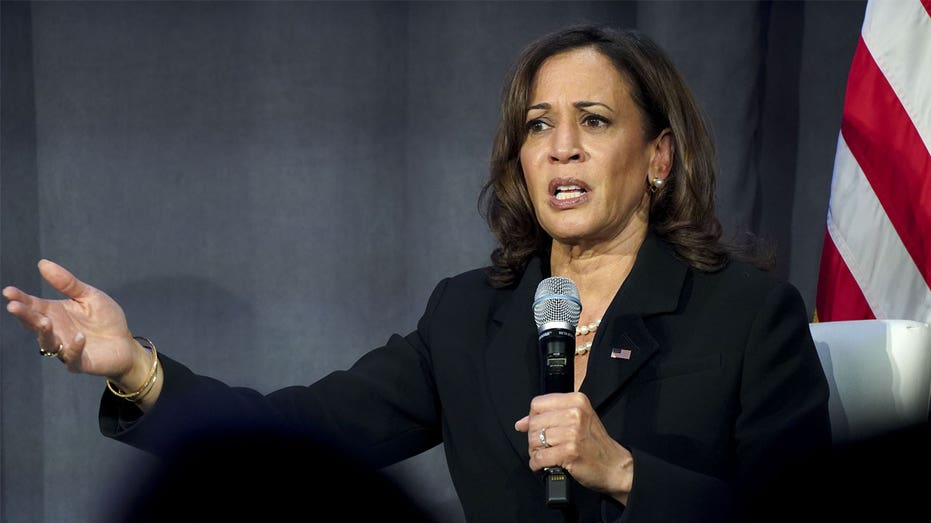White House Press Secretary Karine Jean-Pierre attempted to defend President Biden's lack of urgency and the administration's absence in the high-stake debt ceiling meetings taking place on Capitol Hill.
Fox News Channel's White House correspondent Peter Doocy asked Karine Jean-Pierre at a press conference in Hiroshima, Japan what the president has been doing the last several hours since he has yet to be briefed on the debt ceiling meetings that took place back in DC.
"What was [Biden] doing for the last several hours while they were in these meetings?" Doocy asked.
"Well, they were having conversations, right," Jean-Pierre said. "They were on the Hill, the negotiators… How would he be updated if they're still having conversations on the Hill? It just ended moments ago."
"Couldn’t he call in?" Doocy shot back, noting that the president is currently in Japan participating in the 2023 G-7 Summit.
The White House press secretary responded, saying that the White House is giving "space" to negotiators and that the president will be updated regularly by his advisors.
"Look, Peter, we're going to give the space to these negotiators - the time and the space - to have these conversations," Jean-Pierre said, adding that Biden has sat down with congressional leaders twice to work towards a resolution. "I'm just going to keep going."
In the press conference Doocy had previously asked why Biden does not trust Vice President Harris to lead negotiating in the debt ceiling talks, stating that President Barack Obama deputized then-Vice President Biden to lead negotiation in 2011.
"The last time that we got this close to a debt ceiling default, President Obama deputized his vice president to lead the negotiations. Why doesn't President Biden trust Vice President Harris to lead these negotiations?" Doocy asked.
HOUSE DEMOCRATS BEGIN 'HAIL MARY' ATTEMPT TO GO AROUND SPEAKER MCCARTHY AND RAISE THE DEBT LIMIT
Karine-Jean was quick to say that she disagrees with the premise of Doocy's question, saying that Harris was present at a meeting with congressional members recently and that the president regularly consults with her and listens to her advice.
"I disagree with the premise of your question. The president does," the White House press secretary said. "She was in the meeting with the congressional members that occurred very recently, right before the president left for Japan. She has been in regular conversations with the president. He has taken her as a consult and listened to her advice, as he always does on many issues."
The Treasury Department has given a tentative deadline of somewhere around June 1, the estimate of when the government will no longer be able to pay for spending obligations without more borrowing.
Biden and his allies in Congress have said that Congress should raise the debt ceiling immediately, while Republicans have said they can only support this increase if it is paired with spending reductions.



